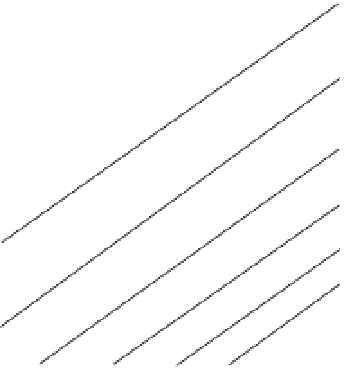Biomedical Engineering Reference
In-Depth Information
and
0
ð
F
¼
0
:
4
þ
0
:
012y
N
for y
T direction
Þ
ð
13
:
41
Þ
where y is the angle that the eyeball is deviated from the primary position measured in
degrees, and y
180
p
r
¼
5208
:
7
x
ð
3
:
705
Þ
. Note that 5208
:
7
¼
, where
r
equals the radius of
1
the eyeball with a value of 11 mm.
Figure 13.39 displays a family of static length-tension curves obtained using Eqs.
(13.38)-(13.41), which depicts the length-tension experiment. No attempt is made to
describe the activity within the slack region, since the rectus eye muscle does not normally
operate in that region. The length-tension relationship shown in Figure 13.39 is in excellent
agreement with the data shown in Figure 13.14 within the operating region of the muscle.
13.7.3 The Force-Velocity Relationship
The original basis for assuming nonlinear muscle viscosity is that the expected linear
relation between external load and maximum velocity was not observed in early experi-
ments by Fenn and Marsh [22]. As they reported, “If the muscle is represented accurately
120
LMR
45
N
100
30
N
80
15 N
60
0
40
15 T
30 T
20
45
T
0
N
T
45
30
15
0
−
15
−
30
−
45
Eye Position (degrees)
12.3
3.705
0
−
4.9
Muscle length x
1
(mm)
New Equilibrium
Point
FIGURE 13.39
Length-tension relationship generated using Equations (13.38)-(13.41) derived from the linear
muscle model and inputs:
Old Equilibrium
Point
130 g for 45
N,
94.3 g for 30
N,
64.9 g for 15
N,
40.8 g for 0
,
F
¼
F
¼
F
¼
F
¼
21.7 g for 15
T,
5.1 g for 30
T, and
0 g for 45
T. These lines were parameterized to match Figure 13.14.
F
¼
F
¼
F
¼








































